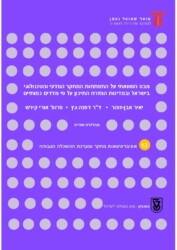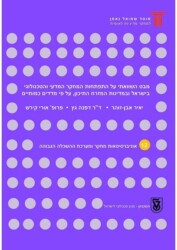Thomson Reuters published in 2011 a study of the many changes that have occurred in the last decade in research activities in the Muslim Middle East, as reflected in its database, ISI. The study reports impressive developments in terms of research policy, investments in research, and research outputs. These processes take place mainly in five countries: Turkey, Iran, Egypt, Saudi Arabia and Jordan.
Following this study, We performed a comparative analysis of the development processes of scientific and technological research that have taken place in Israel and in these Middle East countries. The data presented is based on two main commonly used indicators: the number of publications, which provides an estimate of the research productivity, and the average citations per publication, which provides an estimate of their impact, which in turn reflects the quality of the research. In addition, data are presented relating to the indicators of the most cited publications and researchers, which serve as indicators of the quality and importance of the publications. We also analyzed the number of US patents registered from these countries.
The data presented indicate that the following processes have occurred during recent years:
Significant and rapid progress of Iran and Turkey in many fields, relative to moderate progress (and sometimes, regression) of Israel in the same fields.
Progressively smaller gaps between Israel, Iran and Turkey that are expressed initially in the number of publications, and later in the average citations per paper.
Israel leads in most of the examined fields; however, Iran and Turkey have already surpassed Israel in some areas in the number of publications, and in a few areas even in the average citations of an article.
Israel is far ahead in the number of patents registered in the USA.
The rapid progress in the Middle East is the result of a number of factors, such as high investments in scientific research, multiple initiatives for the establishment of research centers, collaborations with leading universities in developed countries, and so on. All these lead to narrowing the gap in scientific productivity and quality between Israel and these countries.
The stagnation, and in some fields even decline, in Israel’s scientific productivity and quality is the result of sharp cuts in governmental budget allocations to the research universities over the first decade of the 21st Century (“the lost decade”). This led to a decline in the number of faculty members, because the inability of the universities to recruit young faculty members; an increase in their average age, and a dangerous brain-drain. All these factors have adversely affected scientific productivity and its quality. Since the time constant to achieve research excellence is long, i.e., investments bear fruit only after many years, the full impact of the recent processes are yet to be felt.
The project team: Yair Even-Zohar, Dr. Daphne Getz and Prof. Uri Kirsch



